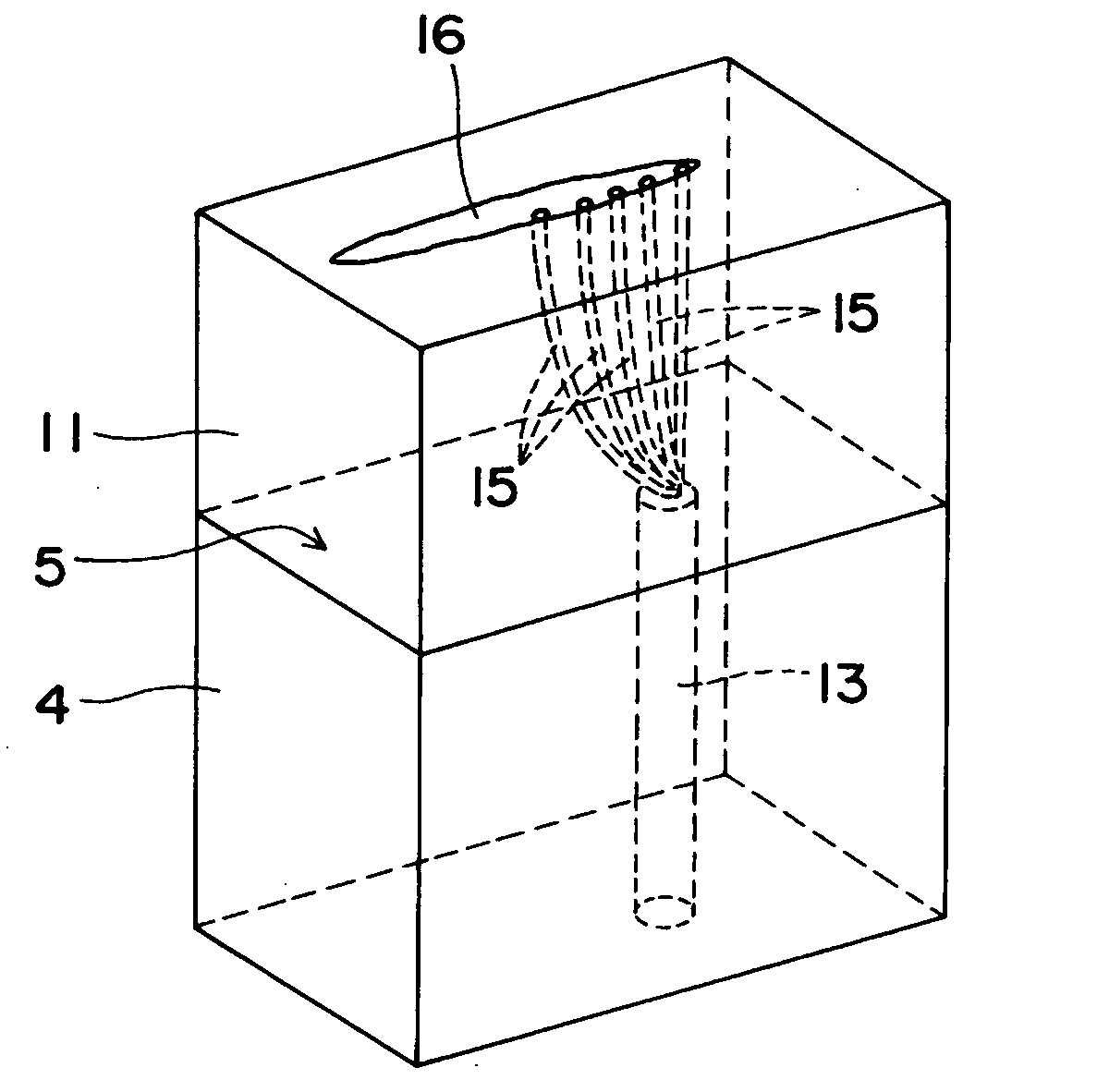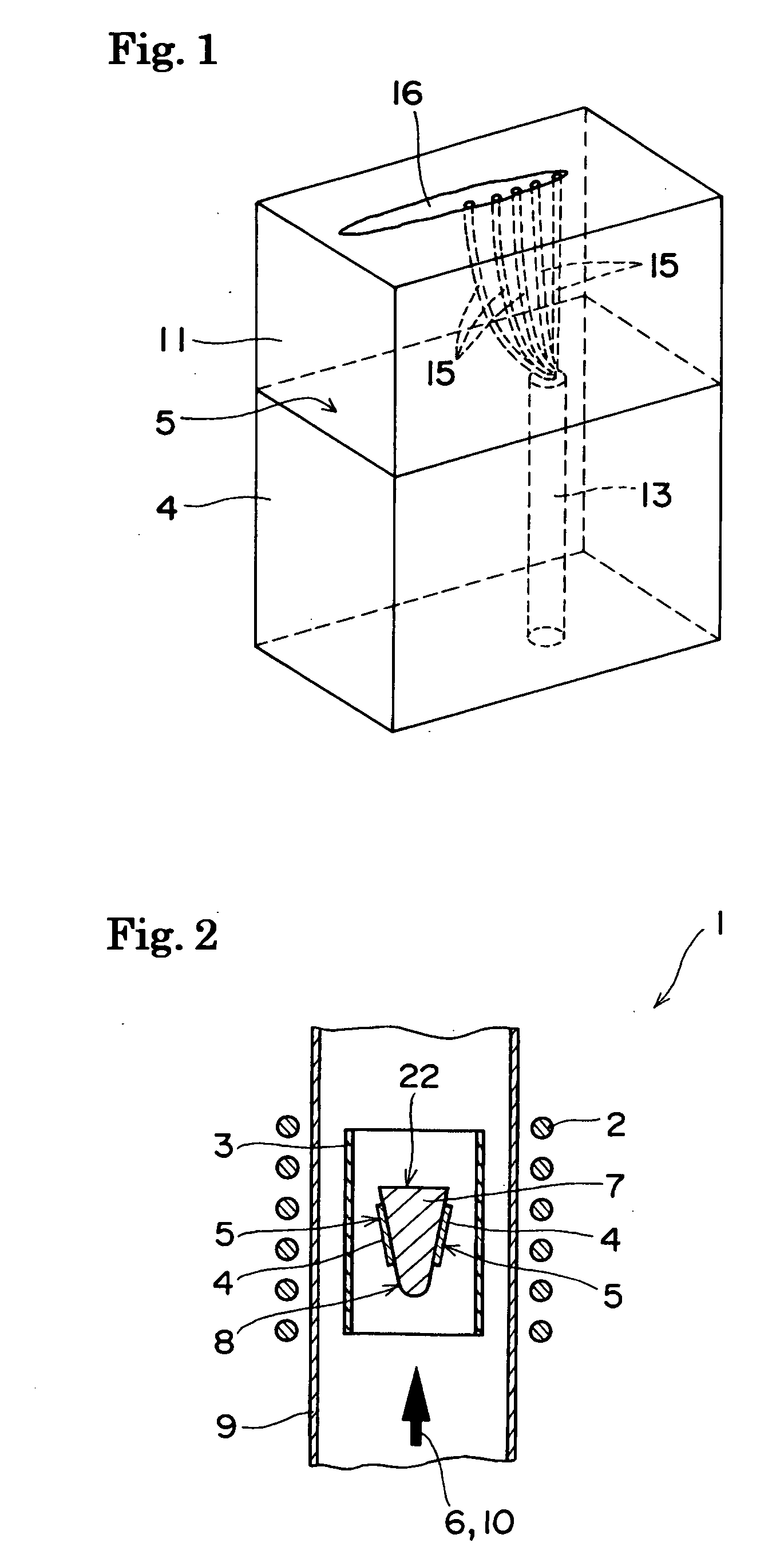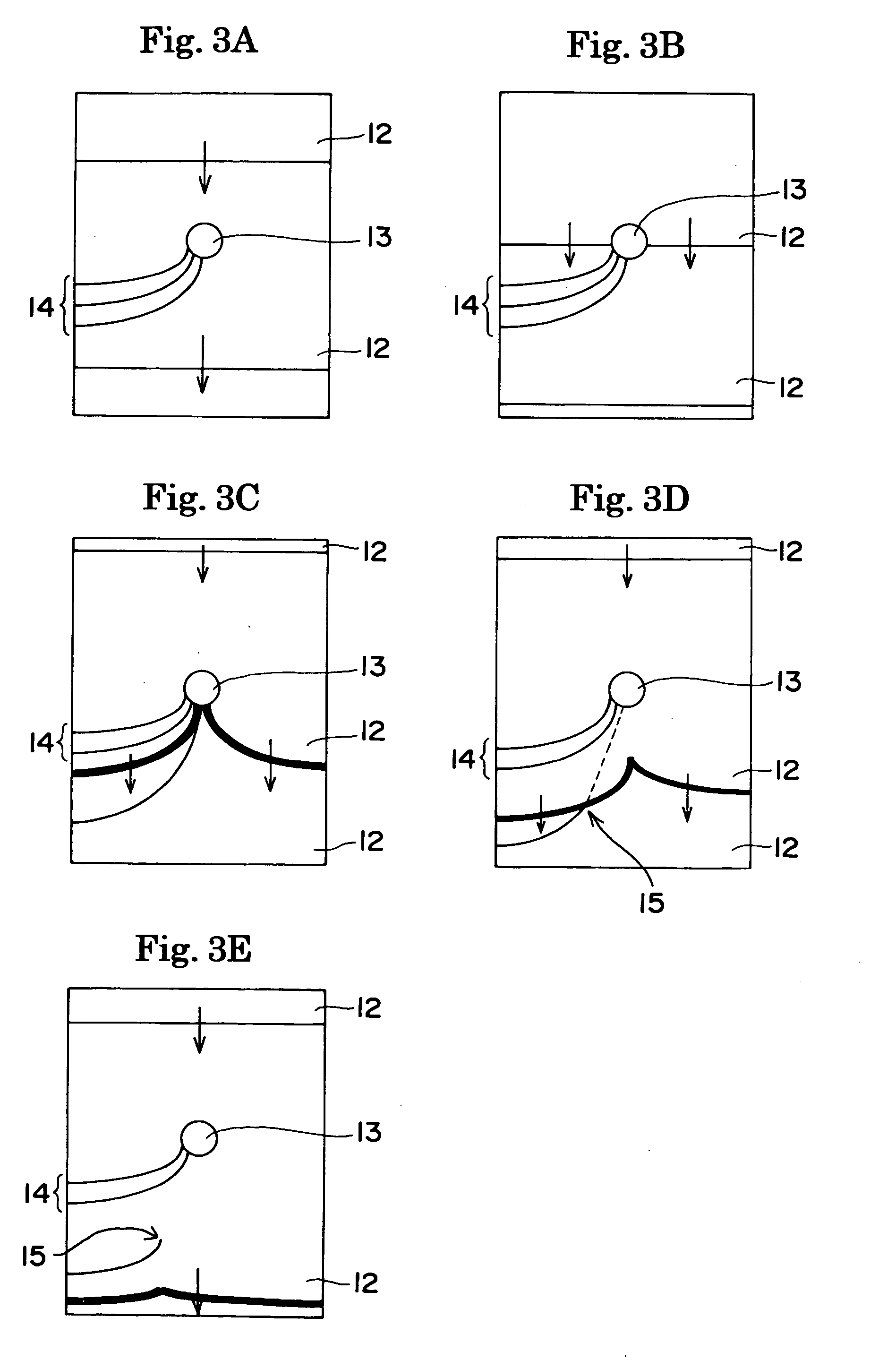Method for preparing sic crystal and sic crystal
a technology of sic crystal and sic crystal, which is applied in the growth process of polycrystalline materials, crystal growth processes, chemically reactive gases, etc., can solve the problems of enlarge the device area and yield drop, and achieve the effect of increasing the number of hollow core defects
- Summary
- Abstract
- Description
- Claims
- Application Information
AI Technical Summary
Benefits of technology
Problems solved by technology
Method used
Image
Examples
example 1
[0092] A SiC crystal 11 was fabricated by epitaxial growth using a radiant heating reactor, which is a vertical hot-wall CVD, which employed the fabrication apparatus illustrated in FIG. 2. The temperature at a top face 22 of a susceptor 7 was measured by a pyrometer via a quartz window arranged on an upper part of the reactor tube 9. This temperature measured by the pyrometer was set as the growth temperature. The growth temperatures given below are all, therefore, the measured temperatures of a top face 22 of the susceptor 7.
[0093] As the SiC single crystal substrate 4, a commercially available 8° off 4H-SiC (0001) substrate (manufactured by Cree, Inc) having a diameter of 50 mm was cut into a predetermined size (¼) for use. The SiC single crystal substrate 4 was set on the susceptor 7 in the reactor, and the remaining gases in the reactor were evacuated to create a vacuum of 10−7 Torr or below. Hydrogen gas only was then charged into the reactor, wherein the surface of the SiC s...
example 2
[0097] SiC crystals were layered under the same conditions as those in Example 1, except for the C / Si ratio of the source gas 6 being changed to be in a range from 0.4 to 1.0, wherein the nitrogen concentration, which was the impurity concentration, of the SiC crystals was measured when the C / Si ratio was changed to be in the range of from 0.4 to 1.0. The results are shown in FIG. 5. As illustrated in FIG. 5, under the above-described conditions the optimal range for the C / Si ratio in which the nitrogen concentration, as impurities, is at a minimum is from 0.8 to 0.9. When the C / Si ratio is lower than that at 0.4 to 0.7, the nitrogen concentration increases as the C / Si ratio decreases. When the C / Si ratio is higher than that at 1.0 or more, semiconductor device properties switched from being n-type to p-type. It was therefore learned that for an epilayer to be used for an n-type high-voltage device, a suitable range for the C / Si ratio was from 0.6 to 0.9 in which the formed SiC crys...
example 3
[0099] SiC crystals 11 were grown by varying the C / Si ratio from 0.6 to 0.9 while keeping the other conditions the same as in Example 1, for investigating the closing probability of micropipe 13 that existed on the SiC substrate. The results are shown in FIG. 4A. From FIG. 4A it can be seen that although the closing probability is less than 1% when the C / Si ratio was approximately 0.9, when the C / Si ratio was lowered, whereby the conditions were made to be excess in Si, the probability of micropipe closing rose, so that at 0.6 the closing probability was 99% or more.
[0100] Therefore, it is clear that with this fabrication apparatus 1 a very suitable SiC crystal 11 for use in a semiconductor device can be obtained when the C / Si ratio is 0.6, which is determined by the carbon atom supply limitation, because the closing probability reaches 99% or more, and from the results of Example 2 there are no problems with surface morphology.
PUM
 Login to View More
Login to View More Abstract
Description
Claims
Application Information
 Login to View More
Login to View More - R&D
- Intellectual Property
- Life Sciences
- Materials
- Tech Scout
- Unparalleled Data Quality
- Higher Quality Content
- 60% Fewer Hallucinations
Browse by: Latest US Patents, China's latest patents, Technical Efficacy Thesaurus, Application Domain, Technology Topic, Popular Technical Reports.
© 2025 PatSnap. All rights reserved.Legal|Privacy policy|Modern Slavery Act Transparency Statement|Sitemap|About US| Contact US: help@patsnap.com



